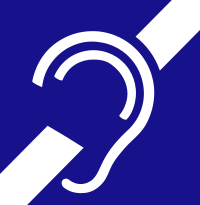
Photo from wikipedia
Drug-induced ototoxicity resulting from therapy with aminoglycoside antibiotics and loop diuretics is one of the main well-known causes of hearing loss in patients. Unfortunately, no specific protection and prevention from… Click to show full abstract
Drug-induced ototoxicity resulting from therapy with aminoglycoside antibiotics and loop diuretics is one of the main well-known causes of hearing loss in patients. Unfortunately, no specific protection and prevention from hearing loss are recommended for these patients. This study aimed at evaluating the ototoxic effects produced by mixtures of amikacin (AMI, an aminoglycoside antibiotic) and furosemide (FUR, a loop diuretic) in the mouse model as the hearing threshold decreased by 20% and 50% using auditory brainstem responses (ABRs). Ototoxicity was produced by the combinations of a constant dose of AMI (500 mg/kg; i.p.) on FUR-induced hearing threshold decreases, and a fixed dose of FUR (30 mg/kg; i.p.) on AMI-induced hearing threshold decreases, which were determined in two sets of experiments. Additionally, the effects of N-acetyl-L-cysteine (NAC; 500 mg/kg; i.p.) on the hearing threshold decrease of 20% and 50% were determined by means of an isobolographic transformation of interactions to detect the otoprotective action of NAC in mice. The results indicate that the influence of a constant dose of AMI on FUR-induced hearing threshold decreases was more ototoxic in experimental mice than a fixed dose of FUR on AMI-induced ototoxicity. Moreover, NAC reversed the AMI-induced, but not FUR-induced, hearing threshold decreases in this mouse model of hearing loss. NAC could be considered an otoprotectant in the prevention of hearing loss in patients receiving AMI alone and in combination with FUR.
Journal Title: International Journal of Molecular Sciences
Year Published: 2023
Link to full text (if available)
Share on Social Media: Sign Up to like & get
recommendations!